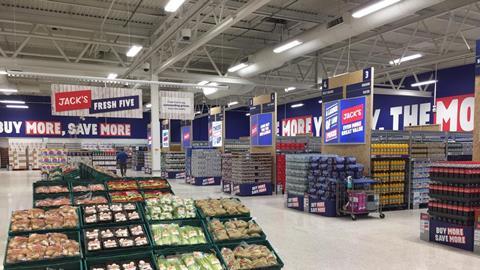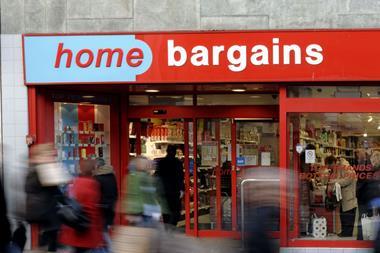So, the union flag bunting will be coming down as Tesco finally pulls the plug on its Jack’s chain. The 13 stores opened under its banner have proven an unlucky venture – dashing hopes of the format replicating the success of the German discounters.
Having last night announced that six will convert to Tesco superstores and seven will shut altogether, putting 130 jobs at risk, CEO Ken Murphy has closed a chapter that will hardly rate among Tesco’s most glorious.
The only surprise, in fact, is that it has taken Tesco’s new boss so long to bring the shutters down on the operation named after Tesco’s legendary “pile it high, sell it cheap” founder.
Because despite the buzz generated by the unveiling of the first Jack’s store in Chatteris in September 2018, it was clear from day one that Jack’s was never going to be a serious rival to Aldi or Lidl.
Tesco was never going to commit the resources necessary to give Jack’s the sort of scale needed to become more than a glorified “test bed” of ideas, most of which had already been trialled in other stores anyway.
On day one, then-COO Tony Hoggett, who now heads up the physical stores operation at Amazon, admitted to The Grocer that Jack’s would be “water off a duck’s back” for the discounters. Tesco was having a “bash” at a new channel to celebrate its centenary, he said, but the competitiveness of its core estate was a far bigger priority for management.
“Aldi and Lidl will only be concerned in the first instance with the first 10 to 15 that run. But we’ve never gone out and said ‘this is our answer to the challenge of the discounters’,” he said.
Yesterday’s announcement – a particularly sad one for the Jack’s staff whose jobs are on the line, and for 1,470 other store colleagues facing uncertain futures amid a shake-up that has seen Tesco slash night-time shifts and hundreds of store counters across its estate – has unfortunately proven Hoggett right.
It’s especially unfortunate given that the discounters are once again on the rise. Today’s Kantar figures make a mockery of those, including, seemingly, former Tesco boss Terry Leahy, who have suggested they are past their peak.
With Aldi and Lidl recording simultaneous growth for the first time since June last year, Lidl saw the fastest growth of any physical retailer, while Aldi has gained more than a million new customers in the past 12 weeks.
Unlike some of its traditional supermarket rivals, Tesco has successfully clung on to the coat-tails of the discounters, managing to record its 13th successive quarter of growth in share.
But this has nothing to do with the money-sucking Jack’s proposition – and instead reflects the ramping up of its Aldi Price Match and Clubcard Prices promotions across its core estate.
Today’s announcement of further efficiency savings suggests Tesco is far from finished when it comes to investing in its core price proposition. It shows the retailer is determined to streamline its business far more, if necessary, to stay in the race.
While this may not ruffle the feathers of Aldi and Lidl, it will certainly make worrying reading for the likes of Asda and Morrisons, whose new ownerships are going to be tested to the full in the months ahead – especially against the backdrop of rising inflationary pressures.
So even as preparations are made for the Jack’s colours to come down, the drums are beating for the next phase of the price war. It will be fascinating to see what Murphy and Tesco do next.




















No comments yet